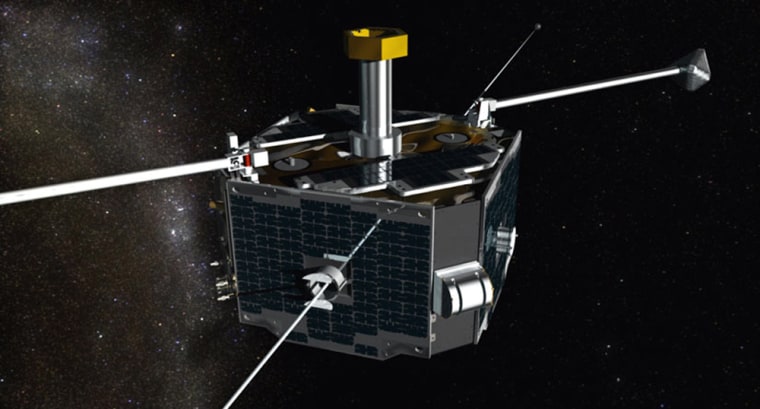A pair of NASA science satellites that have been studying how solar geomagnetic storms impact Earth are being dispatched to the moon for a new mission.
The probes are part of a constellation of five satellites collectively known as THEMIS, an acronym for Time History of Events and Macroscale Interactions during Substorms, which was launched in February 2007.
The spacecraft, which were carefully positioned in orbit for coordinated measurements downstream of Earth, surpassed their two-year design life and remain operational. But over time, the two outer satellites' orbits would have been in Earth's shadow for prolonged periods, leading to cold temperatures that likely would have been fatal.
"When we realized that the satellites would be going into very deep shadows, we started thinking of different methods for saving them — even before they were launched," lead scientist Vassilis Angelopoulos, at the University of California, Berkeley, told Discovery News. "We realized that if we had enough fuel to change their orbits, the moon's gravity would start pulling them up."
Funding for the new mission is still pending NASA's approval, but the satellites already are on their way. The first probe is slated to slip into a preliminary orbit around the moon in August; the second one is due to follow in October.
The orbits will be tweaked until April when the recycled spacecraft would be properly positioned for their new mission, called ARTEMIS for Acceleration Reconnection and Turbulence and Electrodynamics of the Moon's Interaction with the Sun.
"This will be the first time we have two identical satellites with full instrumentation to do space physics experiments," Angelopoulos said. "It was actually not difficult to come up with fantastic new science that could be gotten out of this pair."
Scientists want to put the spacecraft as close as about 62 miles in front of and behind the moon. From that vantage point, the probes could see what's coming toward the moon from the sun, what's coming out the other side and how the environment of the moon varies in response.
"We hope to learn more about the composition of the moon, the weak magnetic fields in the crust of the moon and to try to learn about the interior of the moon by studying its response to varying solar wind conditions," said THEMIS project scientist David Sibeck, with NASA's Goddard Space Flight Center in Maryland.
From a heliophysics perspective, scientists want to see what happens to the solar wind as it wraps around the moon. The far side of the moon is considered to be the most perfect vacuum in the solar system.
The probes could also serve as solar wind monitors, providing real-time data about geomagnetic disturbances that could threaten satellites, power grids and radio communications on Earth.
"We hope the science will be exciting enough to warrant additional funding. It's really peanuts compared to what it would cost for new spacecraft," Angelopoulos said.
